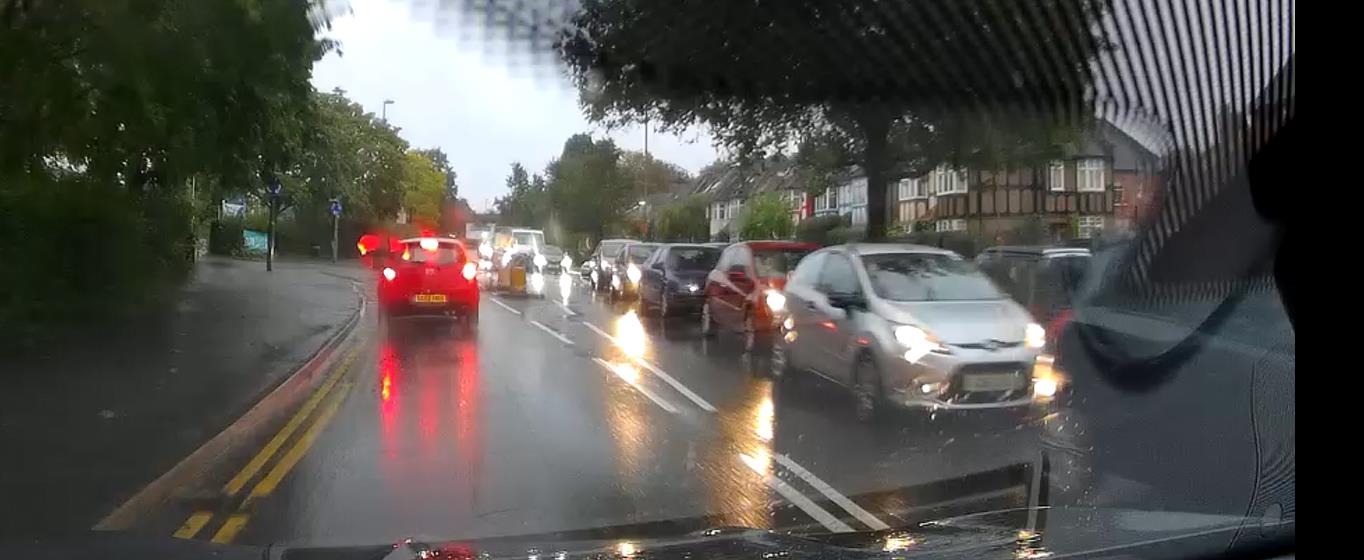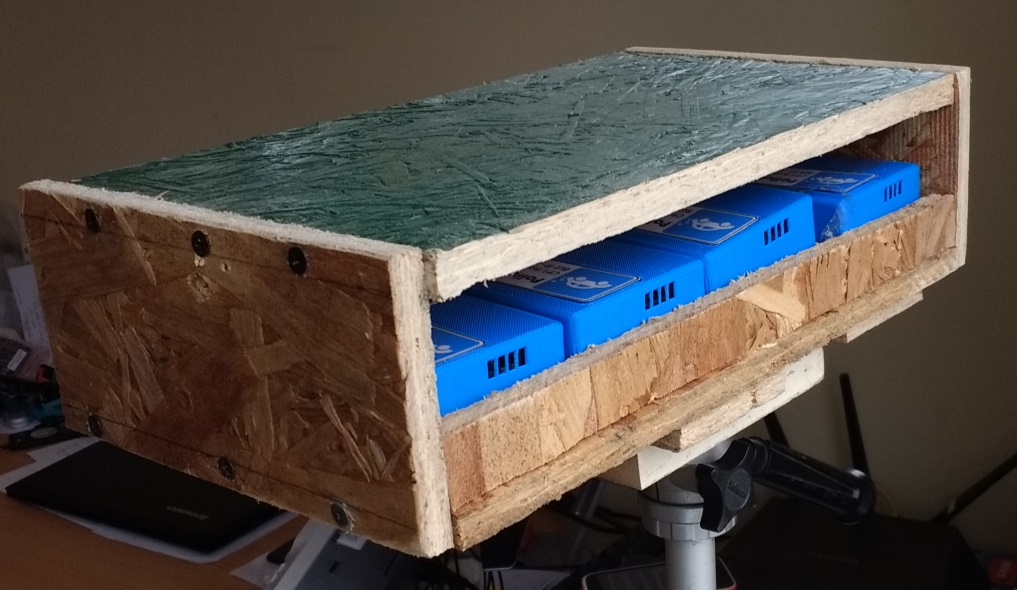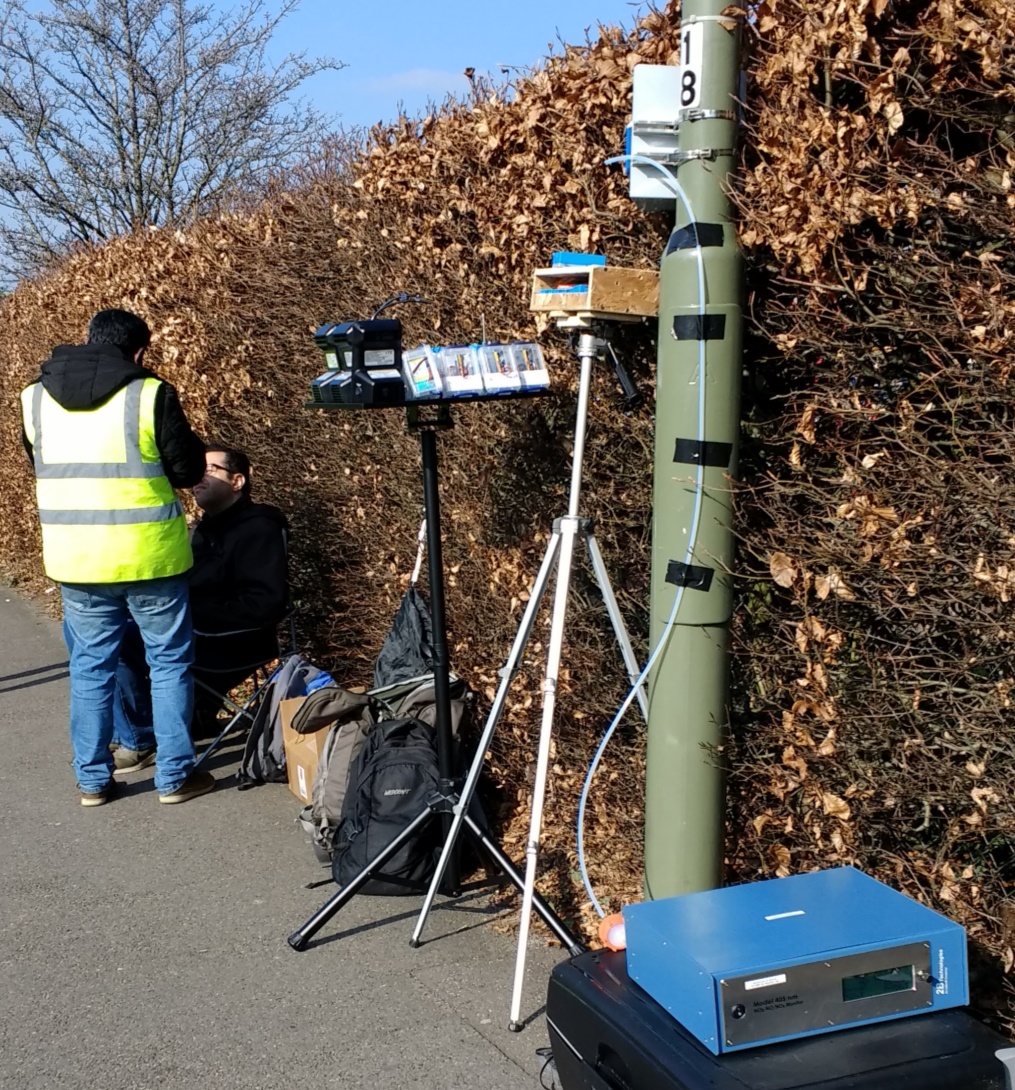One of the first activities together with the University of Surrey’ Global Centre for Clean Air Research, led by Professor Prashant Kumar, was to join a live field campaign to measure the air pollution next to Stoke Road in Guildford, Surrey. The University of Surrey’s campaign measured roadside (pavement) air pollution using both high-end specialised air pollution instrumentation along with more affordable devices.
Stoke Road can be a busy road at peak times and is closely connected to the A3 slip road for London and the South East as well as the direct connecting route to the nearby town of Woking.
Figure 1: Stoke Road during a morning rush hour.
The setup involved measuring the air pollution at a height of approximately 1.5meters above the pavement, a comparable height for pedestrians breathing in roadside air. Thus the need to brush off some old woodwork skills and create a container and support platform for our units.
Figure 2: “bird table” box for holding pollution guardian units
Why measure pollution on Stoke Road? There is a children’s playground right next to Stoke Road, so monitoring pollution levels there is of real interest and also the University has a co-located air pollution measurement station, using sensors from the iSCAPE project. With the support from the Guildford Borough Council, this site is being continuously used by GCARE team as a part of their iSCAPE’s Guildford Living Lab activities.
Now whilst we are designing the Pollution Guardian for measurements in the car, it was of some interest to us to obtain an early view of how our own “CP1” version prototypes performed compared to the specialised air pollution equipment made by GRIMM and more expensive particulate material testers such as Dylos devices.
Figure 3: Roadside setup next to Stoke Road
What were the learnings?
Good results are possible for fine particulate matter (PM2.5) measurement:
- After aligning measurements in time, we are able to obtain a correlation of 0.8 between Pollution Guardian units and the high-end particle spectrometer.
However, NO2 pollutant gas measurement is difficult in the field:
- Pollution Guardian NO2 sensor readings were well correlated with one another but..
- Even after warm-up, we can only obtain 0.3 correlation with a reference measuring unit
- Some NO2 spikes detected by Pollution Guardian units were ignored by the reference NO2 detector and vice-versa.
- One effect we could feel and could see in the “spikiness” of our NO2 readings was the impact of a Northerly wind blowing along the road.
- We would go on to look at how to better protect our units against wind gusts, whilst not compromising our key use case of the car environment.
So, whilst the reasons for lower correlation on NO2 gas readings were not yet clear, this was something we were obviously keen to explore in the planned lab testing with the University of Surrey’s GCARE Air Quality Lab where we would have better control over the environmental conditions.



